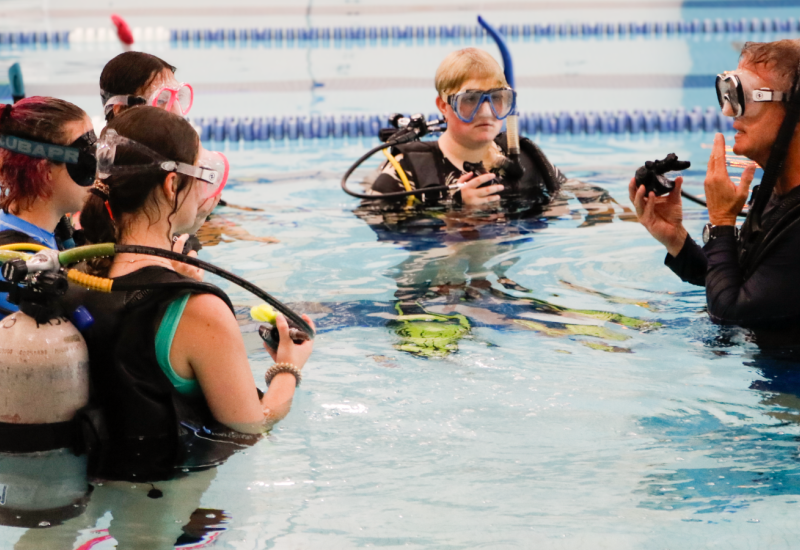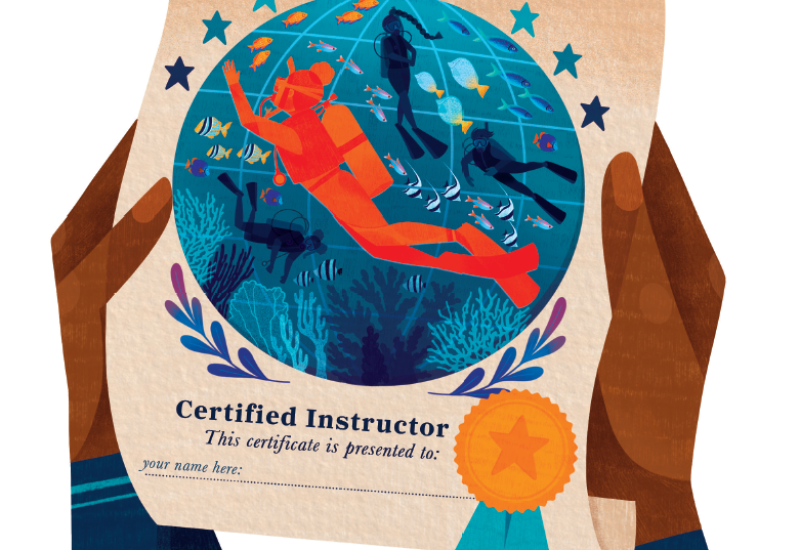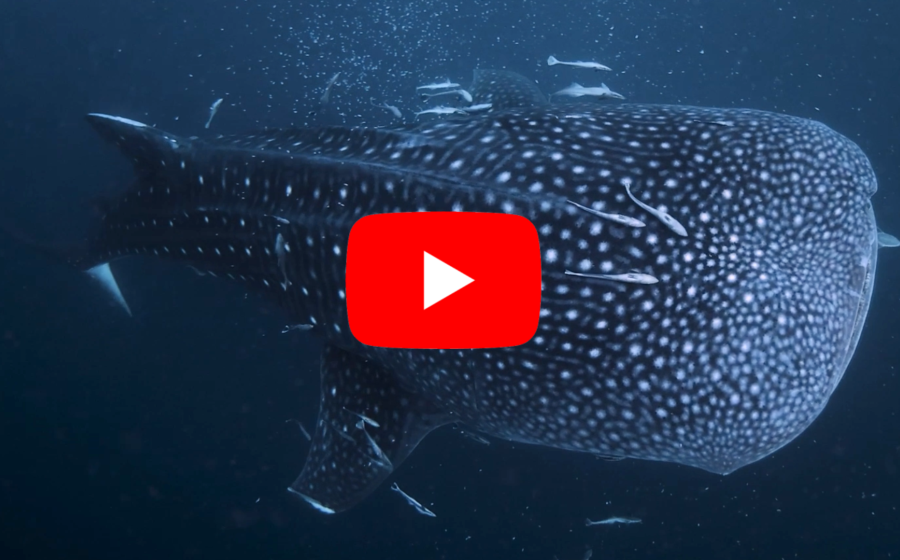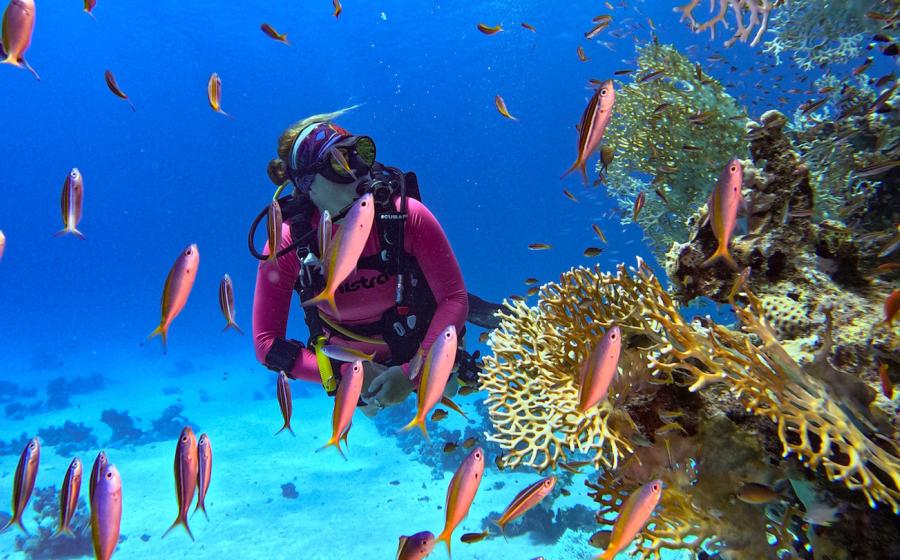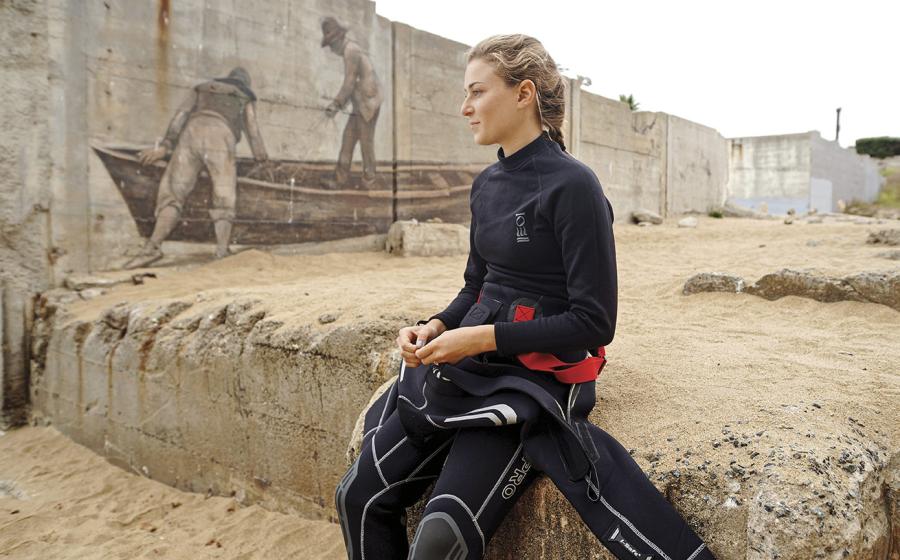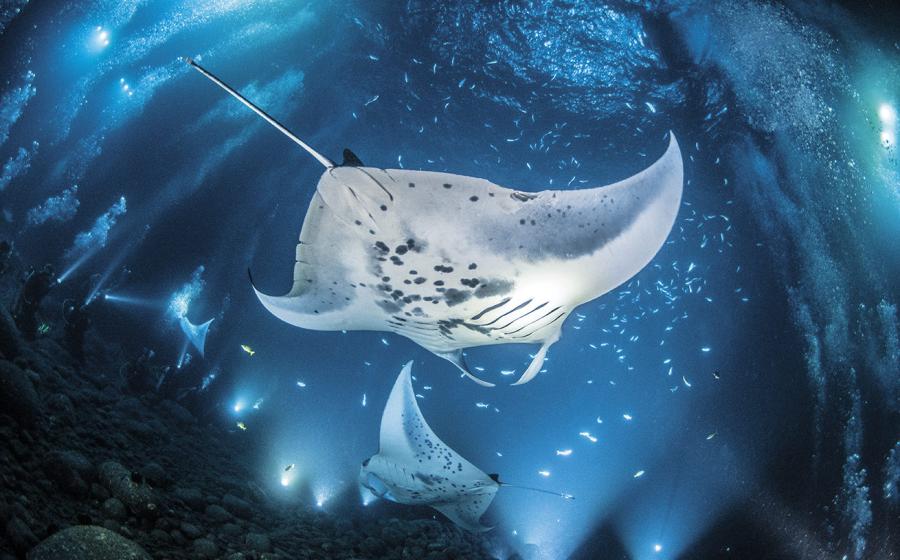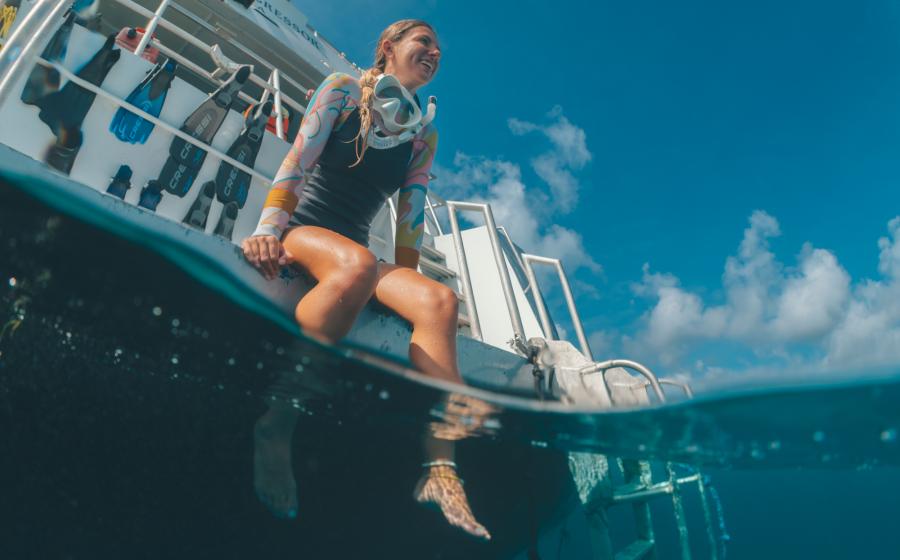How Creating an “I’m Anxious” Signal Changed This Dive Instructor’s Classes

Natalie HoreI'm anxious signal used by instructor
It would happen regularly during my classes: someone would shoot up from the bottom of the pool to the surface, eyes large and white, fear across their faces, as they coughed and water spluttered from their nose and mouth. Most of the time it was the full face mask removal and clear skill that triggered it. Nose breathers particularly find this skill difficult—they need to change their breathing habits, instead relying on the regulator in their mouth for their much-needed breath. Inhaling through their nostrils would instantly mean a nose full of water.
No matter how many different ways I tried to tell this to my Open Water students, our second class would usually send somebody clamoring for the surface. The fact we were getting these issues out in the safety of the pool was helpful, but I felt there had to be a better way.
The truth is, I had been there. I sailed through my pool training before failing my first Open Water attempt when I inhaled residual water in my mask almost 50 feet deep. Panic took over and I threw my regulator from my mouth, shooting straight up for air. Fortunately, my very skilled instructor shoved the regulator back in my mouth, grabbed my weight belt with one hand and fanned his other palm out in order to slow down my ascent. He signaled to the rest of the group—which included my husband—to stay put.
It was horrifying and extremely embarrassing. I had never had a panic attack or anxiety issues before, but here I was, putting myself and the others in my group in danger. It was nine months later that I finally got my Open Water Certification. From then on, there was no stopping me. I wanted to do what my instructor had done for me—provide a safe environment for students to enjoy scuba diving.
One night, after yet another student bulleted to the surface, I wondered whether there was a way my divers could tell me that they were feeling anxious before they did the skill. Instructors are all too aware of the signs of panic, but there really are not many visible signs of intrusive thoughts, a fluttering heartbeat or butterflies in the stomach. These are things I could only know if a student expressed them to me. Obviously, it wouldn’t be convenient or safe to bring all the students to the surface between each skill set to ask them how they were feeling, so I decided to ask them to make a triangle symbol if they felt anxious.
At the next class the following evening, I shared my Open Water anxiety story with them and said they could show me a triangle for any reason they felt necessary that night. Anxiety is normal with new tasks and I would know to give them extra attention in that moment to guide them through it.
It helped immediately. When it came to doing the full face mask removal and clear that night, two of my students used the “I’m anxious” signal. One indicated she just needed to breathe for a little while first. To my surprise, when she was ready, she simply nodded at me to let me know. I was on alert, but she passed the skill amazingly well and without issue.
The other student was a classic nose breather that got particularly tripped up by the fact he had to revert briefly back to nose breathing out to clear the mask. I spent extra time with him practicing breathing in through the regulator and out through the nose. He too passed the skillset. Nobody bolted for the surface that night.
Since deploying the “I’m anxious” signal five years ago, the number of students shooting to the surface during my classes has shrunk dramatically. Addressing learn-to-dive anxiety has enabled me to achieve what I set out to do in the first place: provide a safer environment for new divers.


